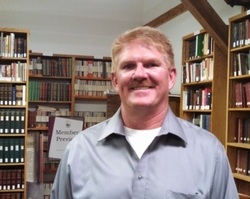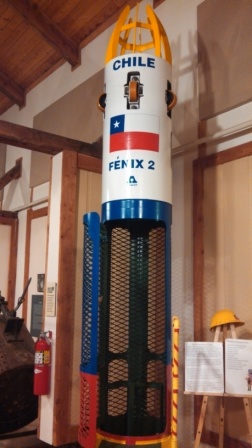|
11/20/2013 Jeff Hart and the Rescue of Los 33 Jeff Hart, the drilling expert whose skill was instrumental in the rescue of 33 Chilean miners in 2010, gave a talk Novemver 7th that was full of surprises. Surprise One – Continuing Interest: Three years after the event that consumed international news for 69 days, Mr. Hart packed the library at the Western Museum of Mining and Industry with a capacity crowd. The audience included museum members, prospectors, rock hounds, students from elementary school to the School of Mines, and anyone with a passion for mining history. Surprise Two – Drilling for Water: Mr. Hart and his crew from Layne Christensen, a South Dakota based water, minerals, and energy extraction company, were drilling water wells in Afghanistan when the Chilean mine disaster occurred. Hearing the story on the news, Hart did not believe anyone could survive the cave-in. Surprise Three – Arrival at the Rescue: Eighteen days into the rescue effort, Chilean President Pinera announced that they had established communication with the 33 miners, and all were alive. In a moving PowerPoint at the beginning of his talk, Hart showed the note that came up the first pilot hole: Estamos bien en el refugio los 33 - We are well in the shelter, the 33. Another seventeen days would pass before Hart received a 4 am call from the president of Layne. At first, he thought something bad had happened to one of his drilling crew’s families. Instead, he was ordered to assemble a crew and get to Chile ASAP. Hart, another employee, and two US Spanish-speaking helpers began the long trip to the Atacama Desert, arriving 35 days after the cave-in, and what would become the mid-point of the rescue effort. Surprise Four – Conditions for Los 33: The miners could survive indefinitely underground. After the first hole was drilled (before Hart’s team arrived), air, food, and water could reach the trapped miners. They had survived on tuna and stale tortillas the first eighteen days. The clock they were working against, according to Hart, was disease. The temperature in the mine was over 90 degrees F, and the humidity was over 90%. Hart joked about the gourmet meals being sent to the miners 2,300 feet below ground while the rescuers ate ham and cheese sandwiches. Surprise Five – No Surprise: The unsafe copper and gold mine was immediately closed after the cave-in, and remains closed to this day. The miners knew the dangers of working in the earthquake prone region, and were paid more than if they had chosen to work in mines with better safety records. Surprise Six – Fenix: The capsule (photo below) sent down the shaft drilled by Hart’s crew was designed by NASA and built by the Chilean Navy. A replica capsule on display in the Western Museum of Mining and Industry is the only other “official” capsule in existence. The first person to use the capsule went down to the miners to assist them and assess their medical status. Rescue expert Manuel Gonzalez did not know with certainty that he would make it back to the surface. He could have been trapped with the miners. Hart called him “the bravest man in the world.” Surprise Seven – New Careers: Four of the rescued miners went to work for Layne Christensen and their Latin American affiliate Geotec after their rescue. Surprise Eight – Lessons learned from the Chilean mine cave-in are being implemented by the US mining industry. The equipment and teams for mine rescue are being assembled at strategic areas in the US, ready to deploy when needed. Jeff Hart said, “The most important thing you could ever get out of a mine is a miner.” The talk was fascinating. I am certain I have missed several critical points of interest, such as the details about the drills and drilling techniques, but don’t worry! A movie is being filmed, and a book on the rescue will be released soon. Until then, you can see the authentic replica capsule at the WMMI in Colorado Springs. To learn more about Jeff Hart and Layne Christensen’s role in the Chilean mine rescue, see: http://www.layne.com/en/about/plan-b.aspx To learn more about the Western Museum of Mining and Industry in Colorado Springs, Colorado, see: http://www.wmmi.org/
Jacqueline Seewald
11/20/2013 06:25:17 am
Sounds like a very interesting talk. Libraries do sponsor wonderful speakers. Comments are closed.
|
Subscribe to this blog: |
Proudly powered by Weebly

 RSS Feed
RSS Feed